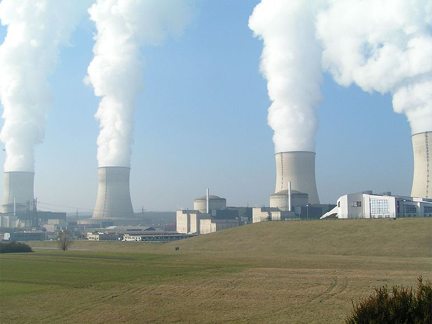Liberation reports that for the second time in a little more than a year the cost of a new reactor under construction at Flamanville, France has risen dramatically.
Originally scheduled to be completed this year for a cost of €3.3 billion, the cost of the European Pressurized Reactor (EPR) doubled in 2011 to €6 billion and completion was delayed until 2016.
Constructors Areva and Electricité de France (EDF) have announced the cost has again risen, now to €8.5 billion ($10.6 billion) for the 1,650 MW reactor.
Similar cost overruns and completion delays have plagued Areva’s EPR reactor under construction in Finland. Originally planned for operation in 2009, the Finnish reactor’s start date has been extended to 2015, six years behind schedule.
With capital costs now more than €5,000 per kW ($6,400 per kW), EDF’s announcement doesn’t bode well for reactor proposals in Ontario, Canada, the US, and in Great Britain.
The French renewables industry was quick to denounce the cost overruns, saying that renewables are cheaper.
The Syndicat des énergies renouvelables (SER) said the situation wasn’t surprising, following EDF’s announcement earlier this year of similar costs for proposed reactors in Great Britain.
This summer both Reuters and Bloomberg were reporting various British estimates of the tariffs needed to make EDF’s proposed reactors profitable at these installed costs. Their sources estimated that the tariffs required varied from a low of €0.12 to as much as €0.19 per kWh ($0.15 to $0.24 per kWh).
SER noted that wind in France is paid only €0.08 per kWh ($0.10 per kWh) and clearly competitive with new nuclear.
What SER didn’t say was that wind generation in France is only paid €0.08 per kWh for the first ten years of operation. Following the first ten years of the contract, the tariffs paid depend upon the wind resource at the site. At the windiest sites, wind generation is paid as little as €0.03 per kWh ($0.035 per kWh) in years ten through fifteen, a fraction of the cost of new nuclear in France.
The full cost of the Flamanville reactor, whatever that might finally be, will be placed into the rate base and borne by French consumers. If regulators force EDF to absorb some of the cost overruns, as a state enterprise, EDF’s loss will be passed onto French taxpayers.
Wind generation and generation from other renewables are treated differently. Under French feed-in tariffs, renewables are paid a fixed price for their generation, and only for their generation. If a renewable project costs more than projected or fails to operate as planned, the owners bear all the costs. Consumers only pay for the generation and only the price that is posted by the regulator.
The government of François Hollande campaigned on modestly reducing French reliance on nuclear from 75% to 50% by 2050. EDF’s announcement may put pressure on the Hollande government to accelerate the transition to renewables.
At the current pace of development, France is unlikely to reach its 2020 renewable targets. It currently takes eight years for a wind project to navigate through the notorious French bureaucracy, in contrast to the two years needed in Germany. Solar has been plagued by inconsistent policy during the previous government of Nicolas Sarkozy that was closely aligned with EDF, Areva, and the nuclear industry.
This article was first published at www.wind-works.org. Reproduced with permission from the author.













